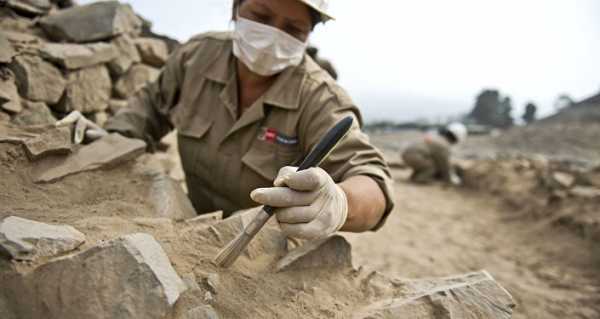
The critics of Garfinkel’s theory argue that the clay heads he focused his attention on have no markers indicating that the heads were meant to represent gods.
A set of clay figurines discovered at the archeological sites of Khirbet Qeiyafa and Moza in Israel have become the focus of a controversy as scholars speculate whether these artefacts can be considered as representation of a “male god”, The Jerusalem Post reports.
Earlier, Dr. Yosef Garfinkel, a veteran archeologist from the Hebrew University in Jerusalem, brought forth a theory suggesting that an anthropomorphic clay head found at Khirbet Qeiyafa, along with two clay heads found at Mozaheads, that date back to the 9th or 10th century BC, may represent “a sculpted image of Y-H-W-H, the Tetragrammaton name of God in accordance with Jewish tradition”, as the newspaper put it.

Figurines allegedly depicting the face of the Hebrew God.
However, Professor Oded Lipschits, head of the Sonia and Marco Nadler Institute of Archaeology at Tel Aviv University, as well as his fellow TAU and Israel Antiquities Authority archaeologists Shua Kisilevitz, Ido Koch and David S. Vanderhooft, recently savaged Garfinkel’s proposal in an article published by Bible History Daily titled “Facing the Facts About the Face of God”.
The critics described Garfinkel’s argument as “riddled with inaccuracies” and his methodology as disregarding “available evidence on ancient coroplastic [terracotta] art and the study of religion in ancient Israel”.
The archaeologists argued that, not only the aforementioned objects should not be grouped together because of their “their obvious typological, stylistic and technological differences”, but also that, despite the fact that the terracotta heads were found in a “cultic context”, there are no markers indicating that these heads were meant to represent gods.
Sourse: sputniknews.com






